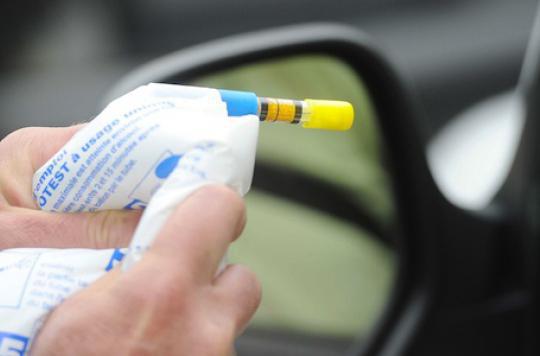Breathalyzers present dangers in the event of incidents with children. In addition, poor storage conditions could lead to contaminate the tip worn in contact with the lips.

Mandatory in all vehicles since July 1, 2012, one in two breathalyzers would be faulty. According to the survey of the monthly Que Choisir, the devices in question indicate a blood alcohol level below the legal limit while it exceeded it.
Not reliable therefore, breathalyzers would also be dangerous. This is shown by a study conducted by the Toxicovigilance Coordinating Committee (CCTV). The cause, toxic products present in our breathalysers and immediate health risks. Sulfuric acid and potassium dichromate (chromium), so many harmful substances that expose users of breathalysers and their children to health hazards.
156 cases of exposure to one of these agents were identified by the poison control centers in France between January 1999 and June 2012. A constantly increasing number which could be linked to the greater number of alcohol tests on the market.
The accidents are often the same: a device chewed or swallowed by accident leading to the absorption of these toxic products. The result, irritations, burns, headaches and conjunctivitis. According to the CCTV, one population would be particularly at risk: children aged 1-4 years. 31 cases are reported for this age group. Parents’ lack of supervision is, for example, frequent.
Much rarer, 4 cases, the device swallowed or chewed by young adults in a state of intoxication.
Another worrying conclusion of this study, a particular situation noted in 13 cases, that of oral contact with a device degraded and contaminated with liquid. These incidents would be linked to poor storage conditions. An anomaly that is all the more regrettable when we know that the temperatures of the vehicle interiors can be much higher than the recommendations of the manufacturers / distributors.
A phenomenon of condensation of water vapor and flow of the reagent tube has in fact been mentioned for very high temperatures in certain vehicles. The flow can then contaminate the tip worn in contact with the lips.
For CCTV, this risk of degradation of devices exposed to high temperature or humidity conditions could appear on the device or on the instructions in addition to the storage conditions.
These substances dangerous for humans are also dangerous for the environment and aquatic fauna. Once incinerated, breathalyzer waste will eventually pollute surface and groundwater. A heightened fear for breathalysers sold on the internet or on the fly and which we do not know exactly what they contain.
In an attempt to alert the public authorities, the association Wood Robins calls for the repeal or modification of the decree requiring road users to have breathalyzers in good working order in each vehicle. According to the association, this obligation must be conditioned by the placing on the market of breathalyzers that comply with standards and free from health and environmental risks.
A request that has gone unheeded. For the moment, Manuel Valls, Minister of the Interior, has only postponed from November 1, 2012 to March 1, 2013 the date on which motorists can be fined for lack of being able to present the devices. The cause, the supply difficulties. However, little hope remains for environmental protection associations, the minister also specified that this period would be used to “assess the interest of the device”.
.











